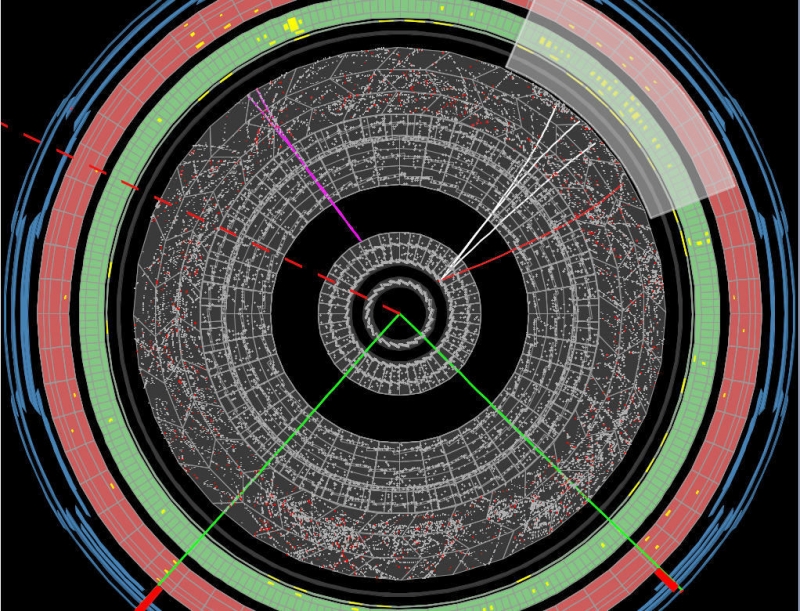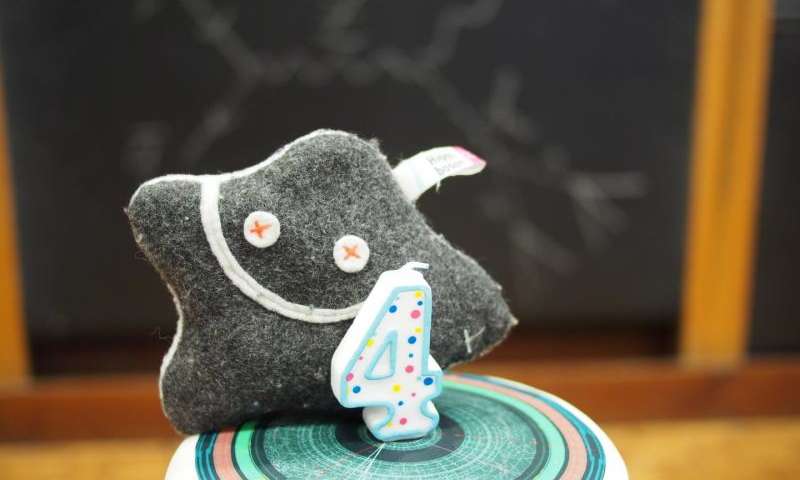This is the Higgs Hunters’ (or HiggsHunters) second call for volunteers; the first was described in my Dec. 2, 2014 posting. Some 18 months after the first call, over 20,000 volunteers have been viewing images from the Large Hadron Collider in a bid to assist physicists at CERN (European Organization for Nuclear Research).

These images show how particles appear in the ATLAS detector. The lines show the paths of charged particles travelling away from a collision at the centre. Volunteers are looking for tracks appearing ‘out of thin air’ away from the centre. (Image: CERN)
A July 6, 2016 news item on phys.org announces the call for more volunteers (Note: Links have been removed),
A citizen science project, called HiggsHunters gives everyone the chance to help search for the Higgs boson’s relatives.
Volunteers are searching through thousands of images from the ATLAS experiment on the HiggsHunters.org website, which makes use of the Zooniverse citizen science platform.
They are looking for ‘baby Higgs bosons’, which leave a characteristic trace in the ATLAS detector.
This is the first time that images from the Large Hadron Collider have been examined on such a scale – 60,000 of the most interesting events were selected from collisions recorded throughout 2012 – the year of the Higgs boson discovery. About 20,000 of those collisions have been scanned so far, revealing interesting features.
A July 4, 2016 posting by Harriet Kim Jarlett on Will Kalderon’s CERN blog, which originated the news item, provides more details,
“There are tasks – even in this high-tech world – where the human eye and the human brain simply win out,” says Professor Alan Barr of the University of Oxford, who is leading the project.
Over the past two years, more than twenty thousand amateur scientists, from 179 countries, have been scouring images of LHC collisions, looking for as-yet unobserved particles.
Dr Will Kalderon, who has been working on the project says “We’ve been astounded both by the number of responses and ability of people to do this so well, I’m really excited to see what we might find”.
July 4, 2016 was the fourth anniversary of the confirmation that the Higgs Boson almost certainly exists (from the CERN blog),

Today, July 4 2016, is the fourth birthday of the Higgs boson discovery. Here, a toy Higgs is sat on top of a birthday cake decorated with a HiggsHunter event display. On the blackboard behind is the process people are looking for – Higgs-strahlung. (Image: Will Kalderon/CERN)
You can find the Higgs Hunters website here. Should you be interested in other citizen science projects, you can find the Zooniverse website here.